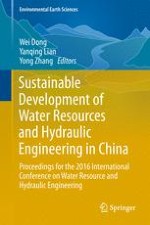This book presents the gatherings of the “2016 International Conference on Water Resource and Hydraulic Engineering,” which primarily focused on the sustainable development of water resources and the environment in both China and the United States. The respective papers cover a wide variety of research areas, including watershed hydrology; river hydraulics; groundwater hydrology; water resources management and sustainability development; water supply planning under climate change; water quality analysis and water pollution; sponge city development and urban watershed management; environment and sustainability; global connections between air and water; and irrigation and drainage issues for agricultural engineering.
The contributions will be of interest to a global readership and highlight the emerging problems facing developing countries, as well as research and measures to successfully deal with them and promote a greener and more eco-friendly living environment.
